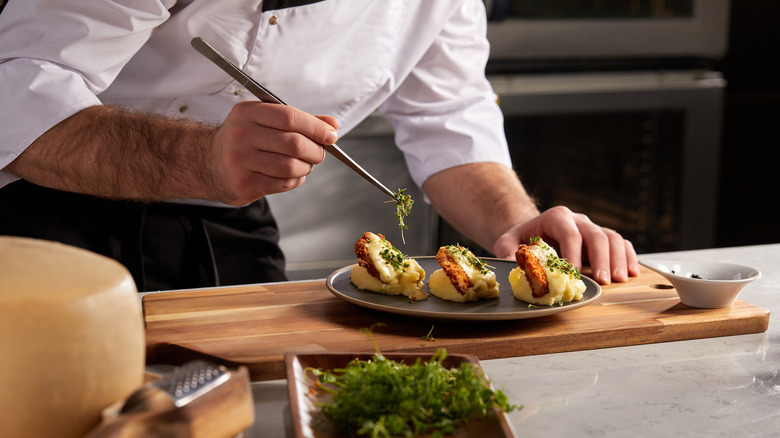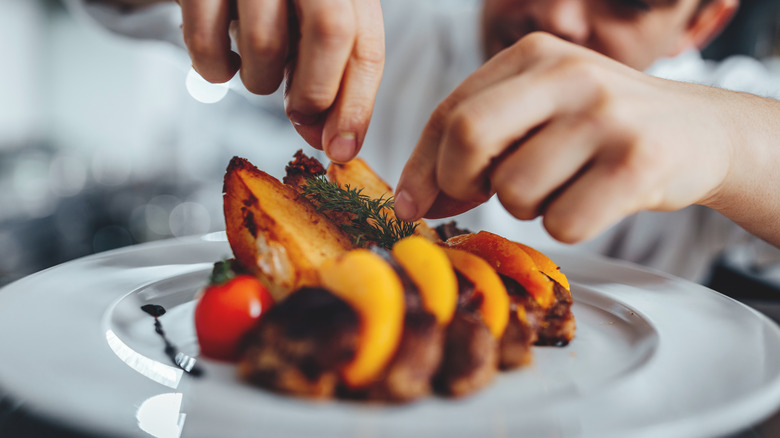Why Plating Food In Odd Numbers May Hold More Visual Appeal
A well-plated dish is like a string of Christmas lights which, wired in series, must all be working or else the whole thing falls apart. It's why chefs avoid serving food on blue plates. One of the more popular widely-held beliefs is that plating food in odd numbers rather than even creates more visual appeal. As the prestigious Auguste Escoffier School of Culinary Arts instructs, "While we recommend staying symmetrical with the entire presentation, the human brain finds odd numbers more pleasing than even numbers." As such, the institution suggests plating five ravioli instead of four or six. Why is this?
In a geometric sense, plating in odd numbers creates a line that the eye feels drawn to follow. One study by Terence Hines of Pace University found that odd numbers are literally more thought-provoking than even numbers. Hines displayed two numbers on a screen and asked participants to press a button only when the numbers were either both even, or both odd. On average, it took participants 20% longer to press the button when both numbers were odd, as it took the brain longer to process them.
This longer processing time captures the attention of the viewer — which is why interior decorators often display home decor in odd numbers. As Apartment Therapy explains, "Odd numbers force your eyes to move around the grouping, and by extension, the room. That forced movement is the heart of visual interest."
Call us odd, but foodies know what we like
Still, all of this reasoning essentially boils down to "odd numbers just look better," which isn't exactly empirical evidence. A study by the Department of Experimental Psychology at the University of Oxford, United Kingdom, sought to support this notion more concretely. In the test, participants were shown different plates with varying numbers of scallops on them (even or odd) and were asked to pick which plate was more visually appealing. The shape of the plate was changed too, as were the physical arrangements of the scallops (i.e. in a vertical or horizontal line, or a cluster). While the test was unable to decisively conclude whether plating foods in evens or odds made a sizeable difference, it did find that visuals play a huge role in how attractive a dish appears to a diner.
Creating a knockout plate relies on the harmonious orchestration of multiple elements, including complexity, contrast, symmetry, texture, and dimensionality. The color of the plate should contrast the color of the food (which is why chefs often use white plates). The size of the plate should be large enough that the food doesn't crowd it, but small enough that it appears that you're getting an adequate portion.
At the end of the day, plating is as much a science as an art — and beauty may be in the eye of the beholder, but appetite remains as much in the stomach as the eye, as well.

